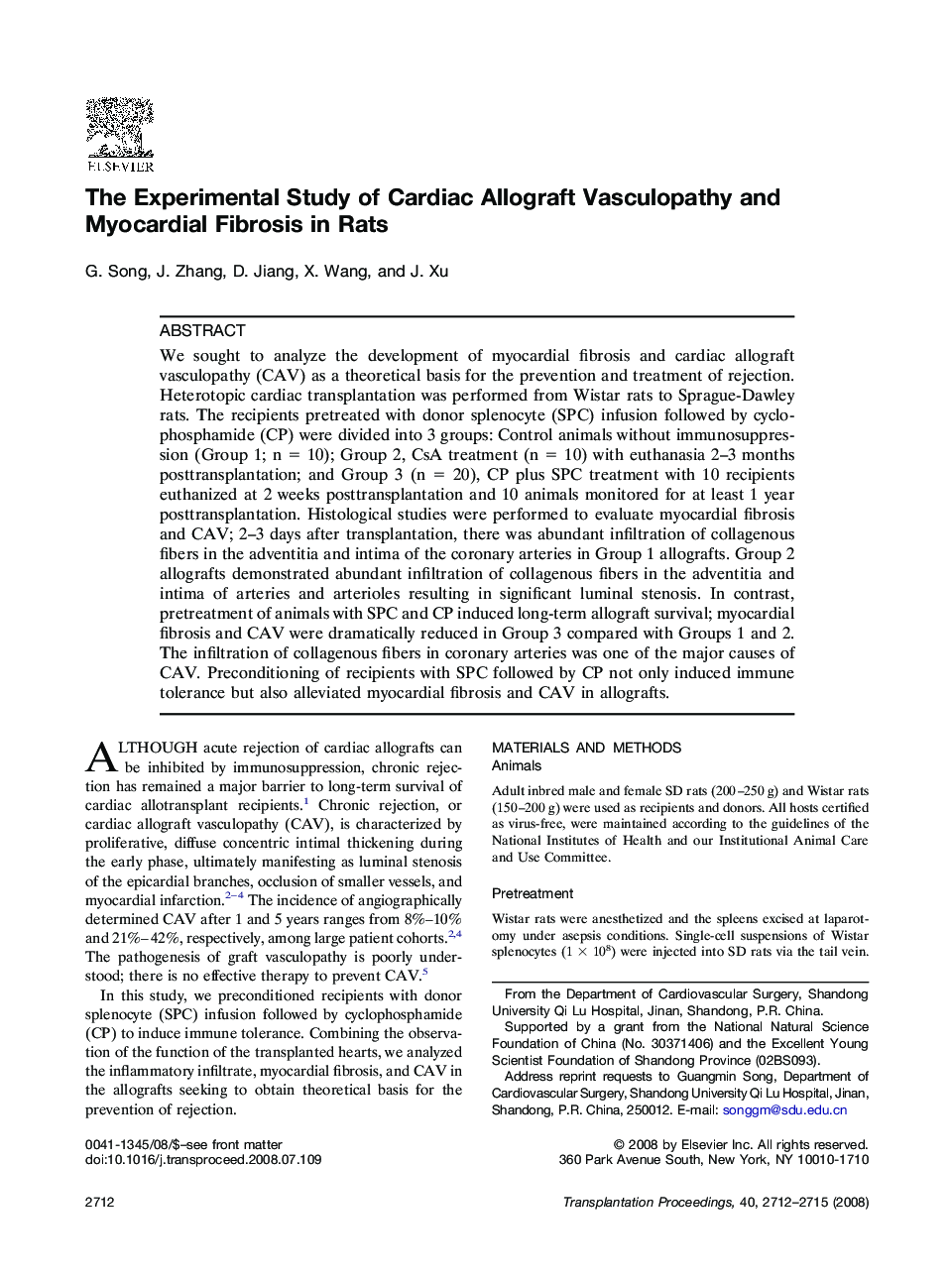| Article ID | Journal | Published Year | Pages | File Type |
|---|---|---|---|---|
| 4262039 | Transplantation Proceedings | 2008 | 4 Pages |
Abstract
We sought to analyze the development of myocardial fibrosis and cardiac allograft vasculopathy (CAV) as a theoretical basis for the prevention and treatment of rejection. Heterotopic cardiac transplantation was performed from Wistar rats to Sprague-Dawley rats. The recipients pretreated with donor splenocyte (SPC) infusion followed by cyclophosphamide (CP) were divided into 3 groups: Control animals without immunosuppression (Group 1; n = 10); Group 2, CsA treatment (n = 10) with euthanasia 2-3 months posttransplantation; and Group 3 (n = 20), CP plus SPC treatment with 10 recipients euthanized at 2 weeks posttransplantation and 10 animals monitored for at least 1 year posttransplantation. Histological studies were performed to evaluate myocardial fibrosis and CAV; 2-3 days after transplantation, there was abundant infiltration of collagenous fibers in the adventitia and intima of the coronary arteries in Group 1 allografts. Group 2 allografts demonstrated abundant infiltration of collagenous fibers in the adventitia and intima of arteries and arterioles resulting in significant luminal stenosis. In contrast, pretreatment of animals with SPC and CP induced long-term allograft survival; myocardial fibrosis and CAV were dramatically reduced in Group 3 compared with Groups 1 and 2. The infiltration of collagenous fibers in coronary arteries was one of the major causes of CAV. Preconditioning of recipients with SPC followed by CP not only induced immune tolerance but also alleviated myocardial fibrosis and CAV in allografts.
Related Topics
Health Sciences
Medicine and Dentistry
Surgery
Authors
G. Song, J. Zhang, D. Jiang, X. Wang, J. Xu,
